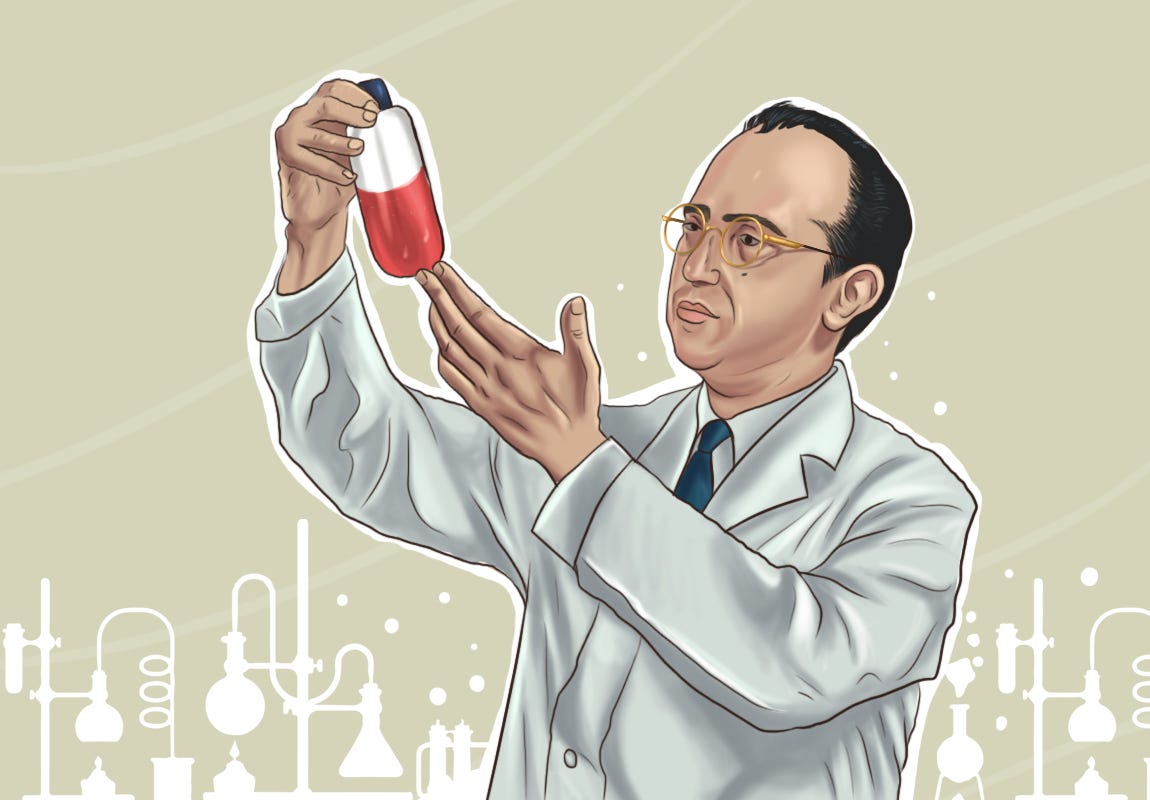The first half of the 20th century saw the devastating ravages of poliomyelitis, a spinal-cord motor neuron disease caused by the poliovirus. In those days, summer was a dreaded time for children. Even though the children could play outdoors for a long time, the summer was also known as the polio season. Children were among the most susceptible to this disease, resulting in paralysis.
Infants exposed to the poliovirus in the first months showed only mild symptoms because of the presence of maternal antibodies in their bodies. As hygiene conditions improved, fewer newborns were exposed to the virus. However, this was not the case in older children and adults, who did not have the benefit of an infant’s immunity.
Franklin D. Roosevelt, former President of the United States, is perhaps one of the most famous victims of the virus. In 1921, he contracted the disease at the age of 39.
The fear of contracting the poliovirus grew year after year. In the early 1950s, 25,000 to 50,000 new cases were diagnosed each year.
In 1955, Jonas Edward Salk, an American virologist and medical researcher, allayed the fears by developing the first safe and effective vaccine for polio. Jonas Salk instantly became a superhero as millions of people were living in fear of contracting the disease.
Jonas Edward Salk was born on October 28, 1914, as the eldest of three sons to orthodox Russian-Jewish immigrants Daniel and Dora Salk in New York City. His family lacked formal education. His parents wanted Jonas and his brothers to focus on their studies.
In 1947, Jonas Salk became associate professor of bacteriology and head of the Virus Research Laboratory at the University of Pittsburgh School of Medicine.
Jonas graduated from high school at the age of 15 and attended the City College of New York. He matriculated at the City College of New York and became the first member of his family to do so. At the beginning of his academics, Jonas was interested in law, but later became interested in medicine and changed his career path. He graduated with a science degree from the City College of New York in 1933.
At the age of 19, Jonas enrolled at the New York University School of Medicine. He did not want to practise medicine. Instead, he wanted to become a medical researcher. Towards the end of his education, he started to work with Thomas Francis Jr, who was conducting killed-virus immunology studies. These studies focussed on using the dead strain of the virus to induce antibodies against future virus attacks. Francis Jr was Jonas Salk’s mentor for many years.
Jonas Salk received his MD in 1939 and completed the internship at Mount Sinai Hospital. After that, he accepted a National Research Council fellowship to work at the University of Michigan. Then he rejoined Francis Jr and spent the next six years developing a flu vaccine, a work that was supported by the US Army and developed and delivered by the duo in 1943. It was a killed-virus vaccine which contained a formalin-killed strain of the influenza virus. It induced antibodies to protect against viral attacks. They believed that it would be less dangerous compared to the live vaccine as it contained only dead viruses.
In 1952, Jonas Salk conducted field tests of his killed-virus vaccine.
In 1947, Jonas Salk became associate professor of bacteriology and head of the Virus Research Laboratory at the University of Pittsburgh School of Medicine. He devoted his time to publishing scientific papers on various topics, including the poliovirus. His work on poliovirus drew the attention of the National Foundation for Infantile Paralysis, and he was invited to participate in a research programme sponsored by the foundation.
By that time, Jonas Salk was convinced that the killed-virus principle would work for polio. He believed that it would be less dangerous than the live vaccine. He faced many difficulties in the process of making a killed-virus vaccine for poliovirus. Large quantities of poliovirus were needed to produce it. Meanwhile, in 1949, John Enders, Thomas Weller, and Frederick Robbins discovered that poliovirus could be grown in laboratory tissue cultures of non-nerve tissue, which earned them the Nobel Prize in Physiology in 1954. This discovery paved the way for Jonas Salk.
In 1952, Jonas Salk conducted field tests of his killed-virus vaccine. He first tested it on children who had recovered from the disease and then on subjects who had not had the disease. Both tests were successful. In 1954, Francis Jr conducted a mass field trial using a needle to inject the vaccine. It was found to reduce the incidence of polio safely.
On April 12, 1955, the vaccine was released for use in the United States. The vaccine was successful as it reduced the number of cases from 18 per 100,000 people to 2 per 100,000. In the 1960s, Albert Sabin, an American physician and microbiologist, came up with the second type of polio vaccine, known as the oral polio vaccine (OPV), or Sabin vaccine, which is given orally.
In 1963, Jonas Salk became a fellow and director of the Institute for Biological Studies in San Diego, California, later known as the Salk Institute. He was bestowed with several honours, including the Presidential Medal of Freedom in 1977.
Jonas Salk passed away on June 23, 1995, in La Jolla, California.
Thank you for listening. Subscribe to The Scando Review on thescandoreview.com.
Happy Teaching!














Jonas Salk: Creator of the first successful polio vaccine